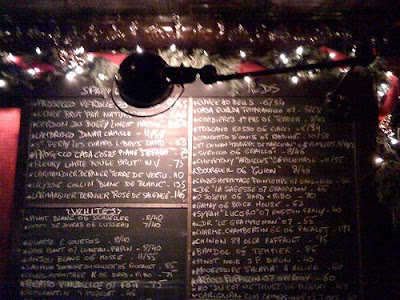 One of the beauties of a long-term love affair with the wines of France is that even twenty years into the relationship there are still new things to be discovered, previously unknown corners upon which to stumble.
One of the beauties of a long-term love affair with the wines of France is that even twenty years into the relationship there are still new things to be discovered, previously unknown corners upon which to stumble. One such recent encounter was with a wine from the Moselle, a department of the Lorraine region that is sandwiched between Champagne to its west and Alsace to its east, and topped off by Luxembourg directly to the north. The Moselle has been classified as an AOVDQS (Appellation d’Origine Vin Délimité de Qualité Supérieure) since 1951, when the region’s viticultural area first began its recovery from the heavy damages sustained from bombings and trench warfare during World War II. Originally known as Vins de Moselle, the VDQS name was changed simply to Moselle in 1995. Given the impending dissolution of the VDQS system, full AOC status is now being sought for the area.
The city of Metz serves as capital to both the Moselle Department and the region of Lorraine.
View Larger Map
The area under cultivation in the Moselle has fluctuated wildly over the last century, from as much as 6000 hectares at the turn of the 20th Century to just over 1000 when the area was granted VDQS status in 1951 to near extinction in the 1970s. Major varieties are very similar to those in neighboring Alsace – Pinot Auxerrois, Pinot Gris, Pinot Noir, Riesling and Gewurztraminer are all sanctioned – while the area’s cooler climate is reflected in the relative importance of the easy-ripening Müller Thurgau. As the presence of Pinot Noir, along with the Pinot Meunier that carries over from nearby Champagne, suggests, white, red, rosé and sparkling wines are all produced in Moselle. Vineyard soils are made up primarily of pebbly clay and limestone.
 Moselle VDQS "Les Gryphées," Château de Vaux 2007
Moselle VDQS "Les Gryphées," Château de Vaux 2007$19. 12.5% alcohol. Nomacorc. Importer: Potomac Selections, Landover, MD.
When Norbert and Marie-Geneviève Molozay purchased Château de Vaux in 1999, the property included 5.5 hectares of the then 39 hectares under vine in the Moselle. The area has since continued its slow recovery, growing to its current size of approximately 54 hectares of vineyards, while the Molozays' estate has expanded to 12.5 hectares.
One of about eleven wines produced at the estate, “Les Gryphées” is Château de Vaux’s everyday white, a blend of 30% Auxerrois, 30% Müller Thurgau, 30% Pinot Gris and 10% Gewurztraminer. Golden straw in tone and slightly shimmering in the glass, the wine’s aromas are evocative of light baking spices, peach nectar, savory herbs and ripe citrus oils. While it displays a fairly clear amalgam of the rich spiciness of Auxerrois and Pinot Gris balanced by the herbaceousness of Müller Thurgau, it’s actually quite a bit subtler than I’d expect from such a blend – medium bodied, low-to-medium acid and reserved in its mouthfeel. Short and relatively simple, it’s nonetheless eminently drinkable and quite food friendly, standing up reasonably well to the assertive flavors of a dish of bratwurst and sauerkraut and even showing a cool, menthol high note as it developed in the glass.
On its second day open, the wine’s acidity felt a touch brighter, its fruit rounder. The nose delivered toned down scents of cantaloupe – sweet and musky but not quite ripe to the point of stinkiness. (If you’ve left a ripe cantaloupe out on the counter this season, you’ll know what I’m talking about.) The parts may be more interesting than the whole, and the wine may take half its interest from its relative obscurity, but I still found it a fine introduction – one I’d be happy to revisit – to the wines from Moselle.





























